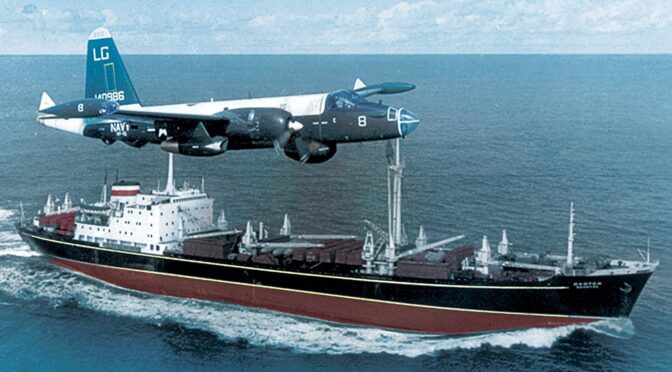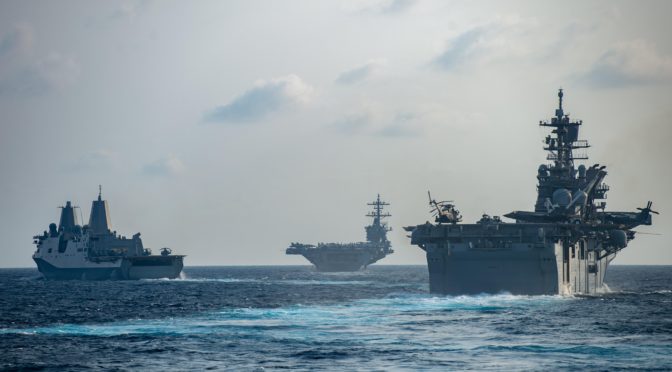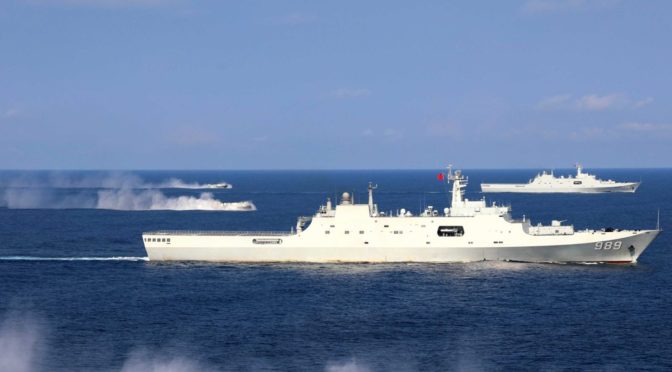By Ryan Ratcliffe
“Ultimate excellence lies…in defeating the enemy without ever fighting.” —Sun Tzu
“America is back,” proclaimed President Joe Biden in his first address to the Department of State. “Diplomacy is back at the center of our foreign policy,” he continued, declaring that the United States would repair its alliances and reengage the world to confront global challenges. Speaking to the department that had recently published its comprehensive assessment of relations with China and called for a revival of U.S. foreign policy, the President’s words were likely well received.
Designed to serve as a modern-day “long telegram,” The Elements of the China Challenge reveals the Chinese Communist Party’s aim to revise world order, highlighting many of the Party’s malign and coercive activities designed to achieve its subversive ambitions. The authors of this seminal work, the Secretary of State’s Policy Planning Staff, conclude by calling for the United States to refashion its foreign policy around the principles of freedom and to reserve the use of military force for when all other measures have failed.
Diplomacy will certainly be fundamental in addressing the China challenge, but returning it to the forefront of U.S. foreign policy will not occur overnight. Decades of systemic decline have reduced U.S. diplomatic capacity and left the military as the more prolific instrument of national power. Therefore, until the Department of State completes the transformation it requires and returns to primacy, the Department of Defense will need to shoulder some of the burden in answering the China challenge. One such element that the Department of Defense should assist with is countering actions in the gray zone.
The gray zone is the “contested arena somewhere between routine statecraft and open warfare,” and it includes actions taken to achieve relative geopolitical gains without triggering escalation. So, despite the U.S. military’s preeminence as a joint fighting force (or, more likely, as a testament to it), state actors like the Chinese Communist Party are pursuing and achieving success in the gray zone. These revisionist actors purposefully avoid armed conflict in an effort to evade the lethal arm of U.S. foreign policy, challenging traditional assumptions of strategic deterrence. Left unchecked, these gray zone victories will gradually amass into a direct threat to U.S. national security; this makes it well within the military’s purview to orient on the gray zone.
To help counter the gray zone strategy the Chinese Communist Party regularly uses, the U.S. military should consider non-traditional approaches to competition. Such creative military support would buy U.S. diplomacy time to rebuild its capacity for securing freedom, while still avoiding armed conflict. This article offers a framework for achieving this non-traditional support from the U.S. military: First, the United States should leverage its military manpower to legally support non-military competition activities. Second, the U.S. military should establish a forward-deployed headquarters to command and control the military’s involvement in competition. Finally, the senior military officer in this competition-focused headquarters should be charged with synchronizing operations in the information environment.
Providing Military Support to Competition
Although there are many definitions, competition is generally viewed as fundamental to international relations. To effectively compete, though, one must develop a thorough understanding of the competition. Therefore, it is important to recognize that the pinnacle of Sun Tzu’s “win without fighting” maxim is not determining the fate of a battle before it is fought; the true measure of excellence is to never even do battle because one’s aims were wholly achieved without conflict.
Recognizing that its competitors seek to achieve their revisionist aims below the threshold of armed conflict, the U.S. military must adapt its deterrence strategies to counter illegal gray zone operations. Deterrence by denial, defined as elevating the probability of operational failure, likely has a greater chance of succeeding in the gray zone than deterrence by punishment, such as taking retaliatory action. To effect deterrence by denial in the gray zone, the U.S. military should enable its interagency and international partners to counter the illicit activity that often underpins gray zone strategies.
Countering malign behavior has many faces: U.S. allies upholding their own sovereignty, partner nations protecting their economic livelihood, and the U.S. government imposing economic sanctions are all examples of ways to achieve competition’s strategic ends. In spite of their critical role in opposing illicit gray zone activities, though, the agencies that confront malign behavior often lack the manpower to reach the point of taking action. Manning shortfalls, exacerbated by the expansive size of the Indo-Pacific, leave the U.S. military’s interagency and international partners unable to muster adequate back-end support for their efforts, such as maintaining robust intelligence pictures or gathering actionable evidence of malign activity.
The U.S. Department of Defense, on the other hand, is more adequately manned for the task of competing in the Indo-Pacific. For example, U.S. Indo-Pacific Command alone has approximately 375,000 military and civilian personnel assigned to its area of responsibility. In contrast, the U.S. Department of State employs only 70,000 individuals throughout the world, and the New Zealand Defence Force is just over 15,000 strong. So, while the U.S. military’s interagency and international partners lack the manpower to identify and track gray zone activity, nearly two decades of asymmetric conflict has left the U.S. military manned, trained, and equipped to provide precisely the type of back-end intelligence and logistical support its partners require. Any manpower that the U.S. military contributes to these partners is likely to have outsized impacts on their ability to compete and counter gray zone actions.
It should be clarified that supporting competition cannot detract from the U.S. military’s lethality, a unique capability it alone provides. Therefore, like any effective strategy, efforts to counter gray zone operations should be focused on the most important and attainable objectives. Careful consideration should be given to preserving the “means” of the U.S. military to protect national security: its combat power. However, supporting competition and retaining combat power are not mutually exclusive. For example, many of the skills required to perform maritime governance, such as fusing multi-source intelligence data or finding and fixing maritime vessels, directly translate to combat operations. Activities supporting competition can and should be used to build operator proficiency, while simultaneously contributing to deterrence by demonstrating credible military power in the region.
A Competition-Focused Command
To synchronize the U.S. military’s support to competition and maintain awareness of the collective risk acceptance, U.S. Indo-Pacific Command should consider establishing a competition-focused headquarters west of the International Date Line. This headquarters would provide the unity of command required to develop the foreign, joint, and diplomatic partnerships needed to compete with a state actor seeking to undermine regional stability.
Some will view a headquarters west of the International Date Line as incurring too much risk of escalation, but the opposite is more likely true. The U.S. military will be unable to deter illicit gray zone activities without accepting some risk, as a willingness to accept risk demonstrates commitment to one’s adversary. Accepting greater risk does not mean the United States should condone or take wanton action, though, as disparate or conflicting actions could elevate the risk of unintentional or inadvertent escalation. Instead, risk acceptance should be carefully considered for the confluence of the U.S. military’s efforts to support competition. Establishing a forward headquarters, then, directly addresses the issue of risk: it would demonstrate commitment to the United States’ competitors while maintaining a complete picture of the military’s support to competition, thereby decreasing the risk of escalation.
The ideal structure for this organization would be a Combined Joint Interagency Task Force (CJIATF) led by a senior civilian, with a 3-star general or flag officer serving as deputy, and possessing a cabinet of experienced foreign policy advisors and liaison officers. To ensure a “forward mindset”, the CJIATF should be positioned in Guam, Australia, or Palau, and staffed by a mix of deployed and permanent personnel. Such a construct will provide responsive command and control for regional competition, increasing the U.S. military’s ability to support competition while freeing other units to maintain their focus on conventional mission sets and traditional strategic deterrence.
There are many factors that make a CJIATF the ideal choice to serve as the nexus of military support to competition. First, joint task forces provide a “single mission focus” with the ability to “integrate forces…in a dynamic and challenging political environment.” They also foster “de facto interdependence” through an environment of mutual reliance on their members’ contributions. The “combined” and “interagency” modifiers emphasize the need to include a wide variety of partners within this joint task force—partners that should range from U.S. government agencies to a host of international liaison officers.
To effectively navigate the complex requirements of providing military support to external entities, the CJIATF should employ a blend of traditional and novel concepts. For example, the “by, with, and through” approach translates well to competition. Although more commonly associated with armed conflict, this approach offers an outline for orchestrating interagency and international cooperation: The CJIATF strives for actions performed by its partners, with the support of U.S. forces, and through a legal and diplomatic framework. Such an approach would allow the U.S. military to support a wide range of partner actions, while still abiding by international law and applicable U.S. Code.
Competition demands exactly the kind of interagency and international cooperation that a joint task force promotes. As the stakes of competition continue to rise with tensions following suit, detailed integration between the military, government agencies, and partner nations remains the best hope for diminishing the risk of conflict. Avoiding conflict while preserving the rules-based international order should be considered success in today’s competition, and a CJIATF is uniquely capable of supporting this objective.
Information-Related Synchronization
In addition to enabling partner actions, the CJIATF will need to grapple with the fact that all competition efforts are inexorably tied to the information environment. Instant communication and weaponized social media offer ample opportunity for competitive exploitation, and they present considerable risk of inadvertent escalation. Additionally, misinformation and deep fakes now offer low-cost means to wreak societal havoc with ambiguous attribution.
Despite some documented success, the United States has struggled to develop a unified understanding of information operations. Difficulty preventing exploitation, such as Russian interference in U.S. elections or Chinese industrial espionage, creates a perception of information vulnerability—a setback the United States must rectify. To fix this, consideration of information operations needs to move from garrison staff, academia, and think tanks to the operational realm. The role of every warfighter has changed: You are no longer simply “doing land operations, you’re doing an information operation in the land domain.”
The connection between competition and information makes the CJIATF’s responsibilities inherently information-centric. Therefore, in addition to enabling its partners to compete, the CJIATF must also synchronize information operations in support of competition. This focus on gaining advantage in the battle for information dominance makes the CJIATF’s senior military officer a logical choice to serve as the first Joint Force Information Component Commander (JFICC).
The JFICC is a novel approach to the battle-tested functional component commander construct. Commanders designate a subordinate functional component commander to establish unity of command and unity of effort for operations in a specific domain (i.e., there are normally separate component commanders for operations on land, at sea, in the air, etc.). This type of domain-specific synchronization is precisely what the United States needs to overcome its previous setbacks in the information environment. Additionally, operations can have significant effects in the information environment regardless of the domain they are executed in, and the inverse is also true: Actions in the information environment can have real-world impacts in physical domains.
To manage this cross-domain interaction, the JFICC needs to synchronize the projected effects of all efforts in the region. This robust requirement, combined with the move towards all-domain operations, means the JFICC must be able to deploy their information-related capabilities as a demonstrable force, in line with the forces operating in the other domains. They will then need the authority and capacity to mass this force in support of decisive action. Designating the CJIATF commander as the JFICC directly addresses this requirement by placing “the responsibility and authority for execution of the decisive [information] tasks under a commander vice under a staff officer.”
Although it is non-doctrinal for a joint force commander to serve as a functional component commander, there is some precedent for this: A Special Operations Joint Task Force commander may also serve as the Joint Force Special Operations Component Commander. Comparing special operations forces with information-related capabilities turns out to be rather effective, as neither “own” physical battlespace, neither historically have a dedicated service component, and both often operate below the level of armed conflict.
Any future JFICC will likely be faced with an extraordinarily complex all-domain problem, and will be able to directly impact national strategic objectives. Experience is the best teacher, and the U.S. military should capitalize on the opportunity to advance its ability to operate in the information environment by employing the first JFICC below the threshold of armed conflict. Doing so will provide valuable insight into the dyad of operating in the physical domain and information environment simultaneously—a fundamental challenge of all-domain operations.
Competition is Not a Nine-to-Five Job
To realize its strategic aims, the United States must make a concerted effort to align its means and ways to achieve its ends, building upon its strengths while improving its deficiencies. Supporting interagency and international partners where command and control resides with a new headquarters commanded by a novel functional component commander presents formidable challenges, but it is precisely the economy-of-force option the United States needs to better compete now. This structure aligns with strategic guidance from the highest levels of the U.S. Government, and it could eventually serve as an example for other theaters to emulate, such as U.S. Africa Command.
Finally, a subtle but crucial aspect of implementing this construct is that it acknowledges the gray zone operating environment for what it is: a contest of wills without violence. Left unchecked, these gray zone strategies could lead to a Tzu-esque defeat of the rules-based international order before Clausewitzian force is ever used. With this recognition, the U.S. military must shift its approach to competition from a “nine-to-five” business model and begin applying effort commensurate with traditional military operations.
Utilizing the U.S. military to support competition will likely be difficult and often uncomfortable. Additionally, establishing another forward-deployed headquarters will require both personal sacrifice and significant monetary commitment, and appointing a new functional component commander will challenge traditional military thought. There is, however, something much worse than these changes: failure to levy the existing force against today’s challenges with the hope that tomorrow’s force will be more capable of achieving success. Hope is not a viable course of action when national security is at stake.
As put forth in The Elements of the China Challenge, the United States needs to mobilize the global forces who ascribe to the existing world order and are willing to defend it, keeping one aim in mind: securing freedom. The forward-mindset and combined, interagency nature of this supporting approach will do exactly that: ensure the United States’ efforts align with and support the strategic interests of its partners in the Indo-Pacific. This paradigm shift could be the rallying cry that unites a constellation of allies and partners to form the whole-of-society approach this contest will require. The time for action is now; the world order we know depends on it.
Major Ryan “Bevo” Ratcliffe is an EA-6B Electronic Countermeasures Officer and a Forward Air Controller in the United States Marine Corps, currently assigned to I MEF Information Group. He will begin pursuing a Master of International Public Policy from The Johns Hopkins University School of Advanced International Studies in August 2021.
The views expressed are those of the author and do not reflect the official position of the United States Marine Corps, Department of the Navy, or Department of Defense.
Featured image: A JH-7 fighter bomber attached to a naval aviation brigade under the PLA Northern Theater Command taxies on the runway with drogue parachute during a flight training exercise in early January, 2021. (eng.chinamil.com.cn/Photo by Duan Yanbing)




